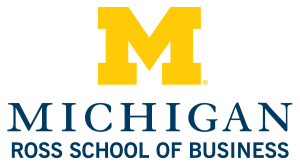This case takes students through the evolution of LEGO’s business model from a traditional product-centric “make and sell” model to a more customer-centric “anticipate and lead” model in which products are co-created with customers, and customers are leveraged as a key factor in the company’s innovation strategy. It begins with LEGO’s struggles in the late 1990s to early 2000s, as competitors and imitators posed threats to LEGO as did the increasing alternative modes of electronic and Internet-based play. LEGO posted losses for a handful of years, and the company’s culture waned. The case then takes students from the early 2000s into 2013, a period through which LEGO underwent significant transformation, which began with a new CEO, Jørgen Vig Knudstorp. The case highlights the company’s evolution through three lenses – its organizational evolution, community evolution, and technological evolution.
LEGO® Products: Building Customer Communities Through Technology
by: M.S. Krishnan
Core Disciplines: Entrepreneurship & Innovation, Information - Technology & Management, Leadership/Organizational Behavior, Operations Management/Supply Chain, Strategy & Management
Available Documents
Click on any button below to view the available document.
Make sure you are registered and/or logged in to our site to view product documents. Once registered & approved, faculty, staff, & course aggregators will have access to full inspection copies and teaching notes for any of our materials.
$3.95
If you need to make copies, you MUST purchase the corresponding number of permissions, and you must own a single copy of the product.
Electronic Downloads are available immediately after purchase. "Quantity" reflects the number of copies you intend to use. Unauthorized distribution of these files is prohibited pursuant to term of use of this website.
Teaching Note
This product has a teaching note available. Available only to Registered Educators. Please login to view it.
Description
Teaching Objectives
After reading and discussing the material, students should:
- See an example of a company (LEGO) whose business model has evolved to embrace co-creation of products with its customers and broader community that includes its partners and suppliers.
- Trace the transformation of a company from a more traditional business model (focused on a “make and sell” mentality) to a more progressive, customer-centric business model (focused on an “anticipate and lead” mentality).
- Learn how LEGO balanced the company’s needs to excel in production efficiency and still have the flexibility to innovate in a customer-centric business model; namely, students will see the new organizational structure and technology platforms that LEGO implemented to do both of these activities well.
- Learn about the challenges of governing (e.g., intellectual property) and the benefits of an open innovation platform.

